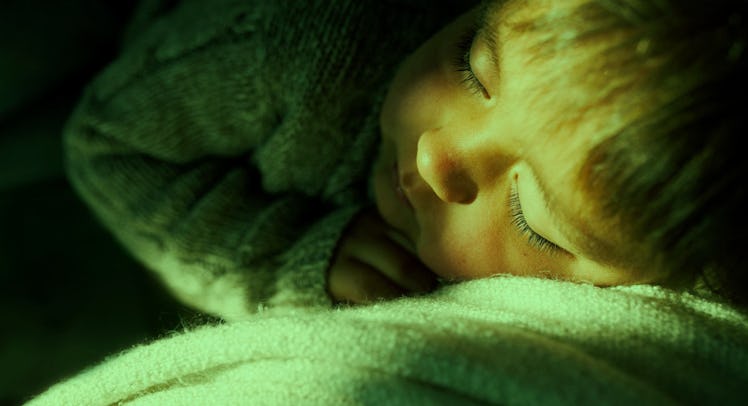I Took Back My Mornings With This $60 Light Bulb
Green means get up!

As a dad, I get one good hour of the day to myself. It’s from 5:00 to 6:00 am, when the coffee pot is full, the world is still, and the kids are asleep. But some days my kids don’t even give me that, and they come into the kitchen ⏤ a crime against parenthood that impacts how the rest of the day will unfold.
Desperate for a solution to keeping my 3-year-old in his toddler bed, I started clamping his doorknob with one of those plastic “safety” covers. He didn’t much like that, but he gradually adjusted to the new closed-door policy. It’s not like he’s ever out of sight or mind ⏤ we’ve got a webcam in the room and use an old phone to keep our eyes and ears on him throughout the night.
Still, this wasn’t enough. Locking him away felt almost as wrong as the time I awoke at 3 a.m. to find him inches from my face, watching me sleep. That’s when I cobbled together a sleep training solution using some of the stray smart-home tech I had lying around the house. Specifically, I installed some Philips Hue colored smart bulbs in his room to keep him in bed. Ever since, my hour of me-time has been undisturbed.
Connecting to the internet (and your smartphone), smart bulbs are great. You can turn them on or off via an app, set timers to ensure your lights don’t stay on too long, and even make them do interesting things like flash when your web-connected smoke alarm goes off.
I had previously installed a Philips Hue Bloom in the kid’s room instead of a nightlight, using it to light up the dark bedroom with the color of my son’s choosing every night. But I was only scratching the surface of the Philips Hue’s capabilities, and it only took me a few minutes of fiddling to make a big change to our morning routine.
Using Apple’s Home app, I scheduled the light to turn from orange, our nighttime tint, to green, every morning at 6:30 am. Next, I explained to my son that he had to stay in bed until the light turned green. We made a game of it, giving him stickers every time he was able to wait out the light. And stickers, in this house, are like cigarettes in prison. Quoting Vince Vaughn in Swingers, “They’re money, baby.”
While I was lucky enough to already own the bits of tech needed to pull this off, parents starting fresh could go at it a couple of different ways. Instead of the $59 Philips Hue Bloom, they could opt for the $79 Philips Hue Go. It’s more expensive, but it’s also more versatile — and it includes a battery, which means you can use it as mood-lighting around the house or in the backyard. (I’ve even brought it camping.) Regardless of the lamp you choose, you’ll also need a Philips Hue Bridge to control it. That will set you back another $59. Or, if you already have a lamp and want a lightbulb to put in it, color bulb starter kits run $179 (but you get three bulbs).
Because Philips Hue is Apple HomeKit compatible, you can easily turn the light on, off, or change the color by talking to Siri. The system also integrates with third-party apps so you can do fun things like set the lights to music, perfect for bedtime disco sessions to help expend all that excess energy. As for me, my next step is installing the Philips Hue Motion Sensor, which I can program to flash the light in my bedroom when one of the rugrats tries to sneak out after bedtime. It’s a work in progress.
This article was originally published on